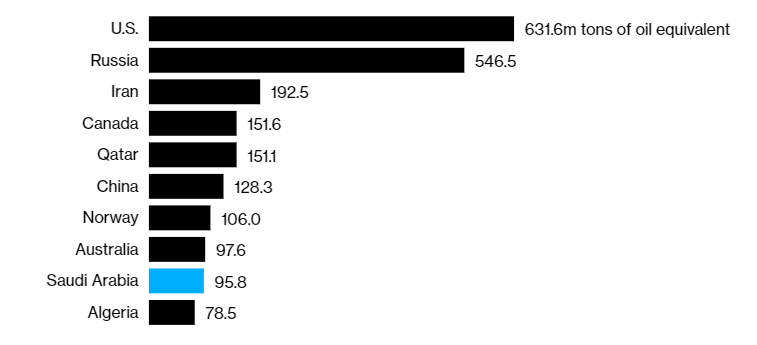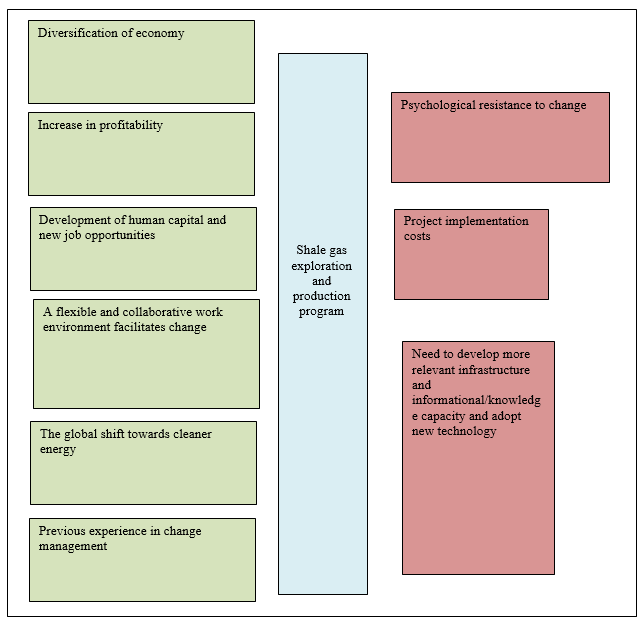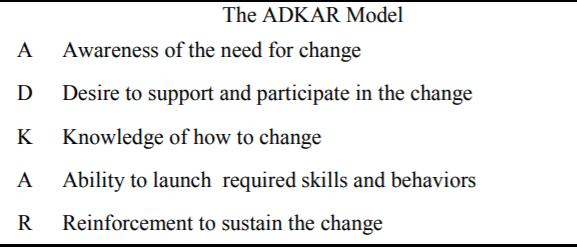The demand for energy in modern society is as high as ever. Besides, fuel consumption is expected to grow drastically within the period of a few decades (Oil and gas trends, n.d.). For this reason, as one of the largest and most profitable producers and suppliers of oil, gas, and petroleum, Saudi Aramco has a lot of opportunities to grow and thrive in the future.
At the same time, the negative sentiment of the global public towards fossil fuels and environmental pollution has been strengthening, and the interest in cleaner and greener technologies and energy sources is now on the rise. Therefore, the exploration of renewable energy sources is a growing trend, which increases the level of competition in the industry and threatens the very survival of oil and gas enterprises in the long term.
Considering this, it is essential for the latter “to grapple with the pace and magnitude of the transition to energy from non-fossil fuel sources” (Oil and gas trends, n.d., para. 3). While Aramco still plans to focus on the production of fossil-based fuels, it undertakes efforts to shift towards the exploitation of a cleaner energy source – shale gas (Dipaola and Ratcliffe, 2019). The purpose of the present report is to evaluate the tools and strategies used by the company in its attempts to tackle this change and, based on the analysis results, recommend some improvements to Aramco’s approach to change management.
The rationale for Change and Aramco’s Objectives
Objectives
Nowadays, Aramco is one of the leaders in the production of natural gas (Figure 1). However, the company plans to improve its position in this regard and to foster “a 15-fold boost in output from unconventional deposits of the fuel” (Dipaola and Ratcliffe, 2019, para. 1).
To attain this objective, the enterprise focuses on the enhancement of its infrastructure, the establishment of new facilities, and adoption of the newest technologies to make the exploration and extraction of shale gas more feasible and cost-efficient (Dipaola and Ratcliffe, 2019; Saudi Arabian Oil Co., n.d.). These targets and needs for “hard” change aimed to develop the necessary structure for the support and maintenance of the intended activities indicate that substantial shifts will also be required in terms of Aramco’s “soft” assets, including knowledge, human resources, and culture (vision and mission).

Rationale
The main reason for Aramco’s interest in the expansion of its shale gas production activities is that this source provides a plethora of new profitability opportunities and is in line with Saudi Arabia’s overall developmental goals. According to the statement made by the firm on its website, the use of shale gas will allow the Kingdom to meet the growing domestic demand for energy and increase sustainability during power generation and water desalination since this unconventional fuel source is characterized by greater efficiency and cleanness compared to the traditional ones (Saudi Arabian Oil Co., n.d.).
The shift will also allow Saudi Arabia to diversify its economy and decrease the country’s dependence on crude oil exports (Dipaola and Ratcliffe, 2019). Therefore, it is valid to say that Aramco’s new strategic goal is a response to different types of external pressures and threats, including the trend for greater environmental sustainability, the risk associated with a high degree of reliance on the single profit source in the Kingdom, as well as other factors presented in Table 1: PESTLE Analysis Results.
Besides, the exploration of shale gas provides opportunities for the development of human capital. It is noted that “as a resource-intensive operation,” Aramco’s exploration program will produce nearly 10,000 direct jobs and approximately 40,000 of the indirect ones (Saudi Arabian Oil Co., n.d). It means that the initiative will contribute to the development of skills and talents relevant to the industry, as well as the overall social welfare due to better income and individual self-realization opportunities.
Table 1: PESTLE Analysis Results.
Force Field Analysis
The identifies reasons for the expansion of shale gas production activities are represented in Figure 2 as forces for change since they point out the advantages that Aramco and the Kingdom will gain after the realization of the initiative. Nevertheless, some factors could constrain the change process and possibly result in unfavorable outcomes. Among them, employees’ psychological resistance to organizational change due to misunderstanding of the company’s intentions and because of the fears of uncertainty, individual power loss, and negative consequences of change may be viewed as the most significant (Rosenberg and Mosca, 2011).
In most cases, psychological resistance implies that employees physically participate in the work towards the desired organizational transition yet are not engaged in these efforts intellectually or emotionally (McCalman and Potter, 2015). The reduced level of employee involvement may compromise the overall success of the change process and considerably increase the amount of time and costs required for its completion.
The abovementioned indicates that Aramco needs to take into account the reasons contributing to resistance. The company may eliminate them through consideration of workers’ needs, effective communication of the company’s vision for change, excellent leadership, and implementation of the right change management strategies (Rosenberg and Mosca, 2011). It is valid to say that many of those change-enabling factors are already present in Aramco since, in the past, the company went through the creation of the flexible, knowledge-sharing employee culture that fostered a freer flow of information across divisions and a greater level of employee involvement in decision making (Yeo, Stubbs, and Barrett, 2016).
Such a supportive and collaborative work environment can be regarded as another force for change along with the fact that the company already has substantial experience in change management and planning, which will be explained in greater detail in the following section.

Planning Activities
The identified rationales and objectives that Aramco outlined to attain its main goal of expanding the shale gas extraction activities are supported by quantitative data. It means that while planning the shift, the company conducted a comprehensive analysis and evaluated various costs and benefits of the strategic initiative. However, the traditional view on the change management process implies that organizations must primarily focus on the management of human resources in a way that unleashes employees’ full potentials (Anderson and Ackerman, 2010). To understand how Aramco planned the change in this regard, it is appropriate to look at the company’s previous experience of promoting organizational learning capacity as part of its corporate strategic 2020 vision.
Evidence provided in the study by Yeo, Stubbs, and Barrett (2016) implies that the planning process aimed to realize the abovementioned project in the company commenced with the identification of the need for change and best practices aimed to satisfy that need based on available research evidence. First, it was revealed that rapidly evolving trends and market circumstances require firms to stay flexible since timely adaptation to those changes in the environment defines their ability to remain competitive (Yeo, Stubbs, and Barrett, 2016) Secondly, it was found that an increase in organizational flexibility can be attained by altering team structures and providing more opportunities for knowledge sharing among subordinates (Yeo, Stubbs, and Barrett, 2016).
After that, the company developed specific behavioral change goals, including the promotion of conversations, collaboration, empowerment, and decision making, and developed a team-based knowledge sharing framework that outlined tasks that must be undertaken by team members to solve problems in a collaborative manner (Yeo, Stubbs, and Barrett, 2016). It is valid to presume that Aramco used similar tactical steps – identification of need, search for best evidence-based practices, and formulation of specific change objectives – when designing a plan for the management of the new initiative – expansion of shale gas operations.
Overall, Aramco’s orientation towards the improvement of the team’s learning capacity and the existence of a flexible knowledge sharing system in the company may be viewed as one of its major strengths (Table 2). According to Yeo, Stubbs, and Barrett (2016), besides enhancing organizational adaptability, these internal factors contribute to greater innovation levels, which leads to higher competitiveness as well.
Additionally, in the context of change management, freer information flow and open cross-divisional communication foster an easier integration of cultural shifts and acceptance of new ideas by employees (Yeo, Stubbs, and Barrett, 2016). Considering that Aramco also has substantial financial and technological capacities, it may be argued that it can manage both hard and soft aspects of change successfully.
Table 2: Results of the SWOT Analysis for Aramco.
Change Management Process at Aramco
When promoting shifts towards desired changes, Aramco prefers to utilize the principles outlined in such models as ADKAR and John Kotter’s 8-step change management approach (Carr, n.d.). At the same time, specific tasks that the company aims to attain during the implementation of change is the development of structured strategies that would allow targeting the needs and behaviors of all relevant stakeholders, identification of factors contributing to resistance, and selection of the right tactics for responding to them, the composition of employee training and education plans, and formulation of strategies for senior leadership involvement in the process (Carr, n.d.).
Based on these objectives, it is valid to say that among the identified preferable approaches to change management, Kotter’s model is the most appropriate. To verify this assumption, different theoretical perspectives on the management of organizational transformation will be discussed and evaluated in the following paragraphs.
ADKAR
The major components of ADKAR are presented in Figure 3 and they refer to certain competencies that employees must have to implement change. According to Almas and Manzoor (2015), this model primarily explains what is necessary for successful change management at the individual level. Therefore, ADKAR may be good for targeting individual employee needs and abilities during the transition process. Still, the model seems to be very abstract and does not clarify but merely implies which tools could be used tools to achieve that. For instance, awareness may be developed through communication, participation can be promoted through motivation, and the ability to launch required skills through training and education.
Nevertheless, ADKAR does not focus on “practical execution of specific steps” at the “broad-scale organization” level compared to Kotter’s model of change management (Stragalas, 2010, p. 31). Considering that Aramco aims to develop an integral change strategy that addresses the behaviors of multiple stakeholders, including both subordinates and top executives, ADKAR would not be particularly useful for the company. Besides, when trying to resolve the problem of resistance, it may be more appropriate to apply some management principles introduced by William Bridges and Edgar Schein (Lewin) since, unlike ADKAR, they are concerned with the issues of employees’ psychological and emotional states during the change process.

Kotter’s 8-Step Model
Kotter’s model is one of the most detailed and less abstract compared to the previous one (Figure 4). Since this model combines cultural, strategic, informational, structural, and behavioral aspects of change, its major advantage is the provision of “a three-dimensional linkage between individuals, groups, and the organization” (Stragalas, 2010, p. 31). In this way, it is the right choice for Aramco if it wants to target multiple stakeholders simultaneously.

The steps outlined in Kotter’s model also allow meeting Aramco’s objective of involving top managers in the transition process since it emphasizes the contribution of leadership to favorable management outcomes. Besides, it implies that the lack of employee awareness of the need for change, resources, and motivation are the primary barriers to a smooth organizational transformation. For instance, step 5, “empower others to act,” suggests that employees must be stimulated intellectually to make decisions and perform relevant tasks, and it is valid to say Aramco’s employee culture oriented towards team learning and free knowledge sharing allows for this level of empowerment already.
Overall, although Kotter’s theory is still open to interpretation and allows for a substantial degree of creativity and flexibility in terms of change management (for example, short-term wins and objective may be specifically tailored to suit different organizational contexts and strategic orientations), it has been validated through many research studies (Stragalas, 2010). Thus, it provides a valuable, evidence-based, and sufficiently detailed insight on how to conduct successful comprehensive change interventions.
Lewin’s Approach to Change Management and Bridges’ Model
It may be argued that through the realization of steps 4 and 5 of Kotter’s model, Aramco will be able to transform workers’ behaviors and mindsets and, thus, address the problem of psychological resistance because an inspiring vision has a purpose to motivate employees, whereas empowerment is possible merely when individual needs are aligned with the organizational ones to a substantial degree (Choi et al., 2016). However, the approaches developed by Lewin and Bridges provide more specific solutions to the issue of resistance to change and, thus, may be applied as well.
Bridges’ model comprises such steps as “Ending, Losing, Letting Go; Neutral Zone; and New Beginning” (Stragalas, 2010, p. 31). The first phase is characterized by a sense of loss and discomfort in employees, which can be transformed by leaders through continual and consistent communication, as well as the promotion of team morale (Stragalas, 2010). As for Lewin’s model, it consists of three steps: Unfreeze – Change – Refreeze (Stragalas, 2010). In Edgar Schein’s explanation of Lewin’s three stages of change, the first two of them always provoke a sense of psychological uncertainty and “survival anxiety” (Stragalas, 2010, p. 33).
Therefore, the main task of leaders and managers is to promote psychological safety among employees through positive role-modeling, continual encouragement, communication of a positive vision, and individual consideration at the Refreezing stage (Stragalas, 2010). The latter requirement means that appropriate HR practices, including employee education, recognition, rewards, and so forth, must be implemented to stimulate and consolidate desired behaviors. It may be recommended for Aramco to focus on this part of change management since it may foster an easier acceptance of change by subordinates.
Conclusion and Recommendations
As the conducted analysis and literature review revealed, Aramco’s decision to expand its natural gas production activities is determined by several external factors. Among them, stakeholders’ interest in cleaner energy sources and the growing energy demand is the most important. To achieve this goal, the company plans to enhance its technological capabilities and infrastructures. However, such an initiative will require not only hard changes but soft ones as well, which means that the firm will need to develop its knowledge and human resources and foster a shift in the behaviors and mindsets of its current employees.
As such, it seems that Aramco utilizes appropriate practices and strategies to manage the change. It aims to involve all relevant stakeholders in the process and pays attention to the problem of resistance to change. Besides, the enterprise already has a flexible knowledge-sharing and collaborative environment that facilitates communication and vision sharing, which may be viewed as one of its core strengths. Moreover, Aramco mentioned that Kotter’s 8-step model is its preferred change management framework. Since this approach is considered one of the best practices nowadays, it may be recommended for the company to continue using it.
Specific focus on communication and employee motivation, as well as alignment of individual needs with the organizational ones through appropriate HR practices, will allow reducing resistance to change and consolidating positive organizational behaviors in the long term.
Reference List
Almas, K. and Manzoor, H. S. (2015) ‘An application of ADKAR change model for the change management competencies of school heads in Pakistan’, Journal of Managerial Sciences, 8(1), pp. 77-95.
Anderson, D. and Akerman, L. (2010) Beyond change management. San Francisco: Pfeiffer.
Blomquist, L. B. (2015) Political-security risk in the oil and gas industry: the impact of terrorism on risk management and mitigation. Web.
Carr, M. (n.d.) Change management consultant. Web.
Choi, S. L. et al. (2016) ‘Transformational leadership, empowerment, and job satisfaction: the mediating role of employee empowerment’, Human Resources for Health, 14(73), pp. 1-14.
Conner, H. (2015) Managing environmental risk in the oil and gas industry. Web.
Dipaola, A. and Ratcliffe, V. (2019) ‘Saudi Aramco sees shale gas as Kingdom’s next energy bonanza’, Bloomberg. Web.
International Labour Organization (2016) Occupational safety and health and skills in the oil and gas industry operating in polar and subarctic climate zones of the northern hemisphere. Web.
Kobayashi, Y. (2007) Corporate strategies of Saudi Aramco. Web.
KPMG International (2012) Shale gas: global M&A trends focus on Argentina, China and United States. Web.
McCalman, J. and Potter, D. (2015) Leading cultural change. London: Kogan Page.
NICDP (2019) Human capital. Web.
Oil and gas trends 2018-19 (n.d.) Web.
Prevett, R. (2018) ‘18 disruptive technology trends for 2018’, Disruption. Web.
Reed, S. (2019) ‘Saudi Aramco is world’s most profitable company, beating Apple by far’, The New York Times. Web.
Rosenberg, S. and Mosca, J. (2011) Breaking down the barriers to organizational change. Web.
Saudi Arabian Oil Co. (n.d.) Web.
Saudi Aramco SWOT & PESTLE analysis (2019) Web.
Vaughan, A. (2019) ‘Saudi Aramco says oil industry faces ‘crisis of perception‘’, The Guardian. Web.
Wagner, J. and Armstrong, K. (2010) ‘Managing environmental and social risks in international oil and gas projects: perspectives on compliance’, The Journal of World Energy Law & Business, 3(2), pp. 140-165.
Yanting, Z. and Liyun, X. (2011) ‘Research on risk management of petroleum operations’, Energy Procedia, 5, pp. 2330-2334.
Yeo, R., Stubbs, J. and Barrett, M. (2016) ‘Team-based knowledge sharing: learning through complex work challenges’, International Journal of Human Resource Development: Practice, Policy & Research, 1(1), pp. 65-83.
Yudha, S. W., Tjahjono, B. and Kolios, A. (2018) ‘A PESTLE policy mapping and stakeholder analysis of Indonesia’s fossil fuel energy industry’, Energies, 11(1272), pp. 1-22.